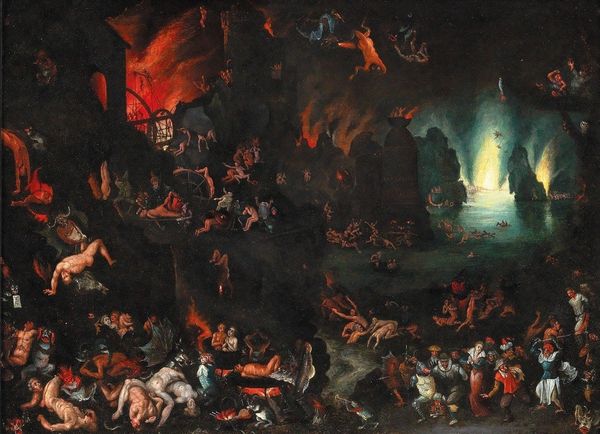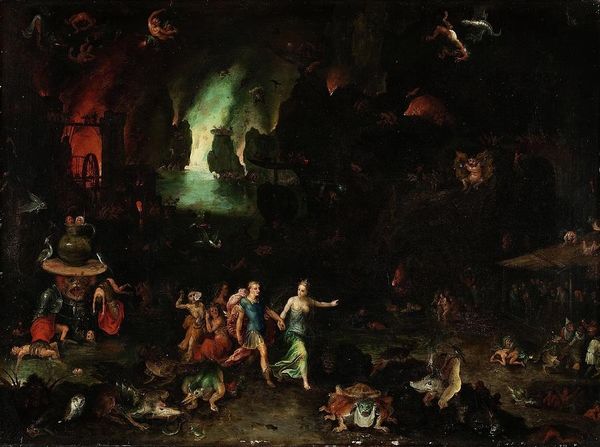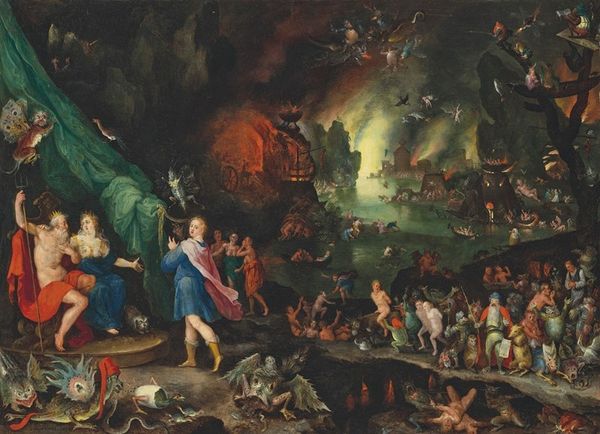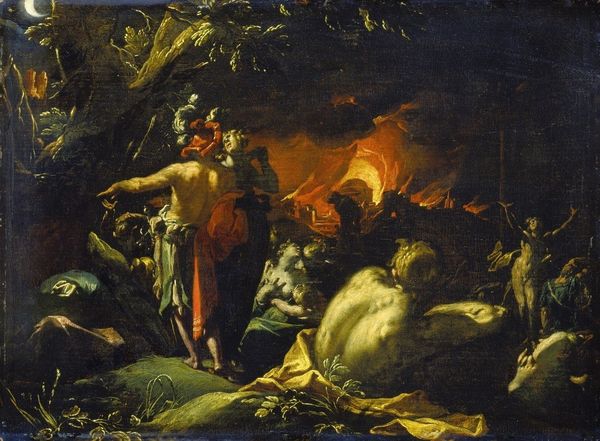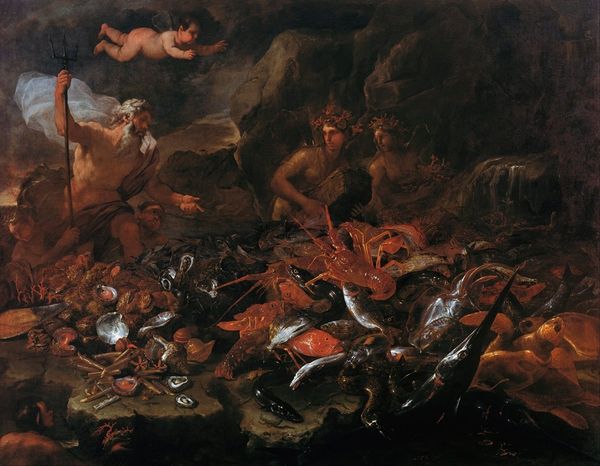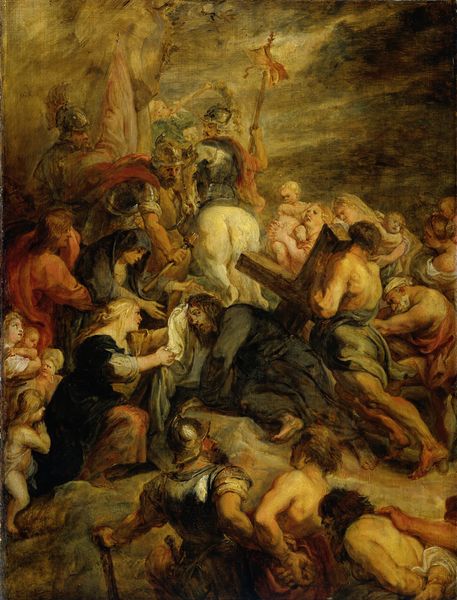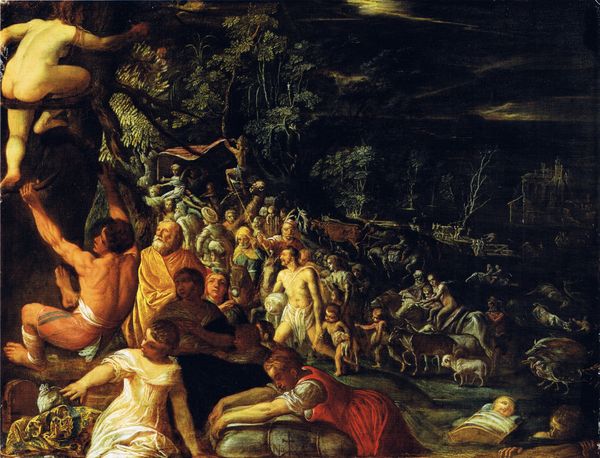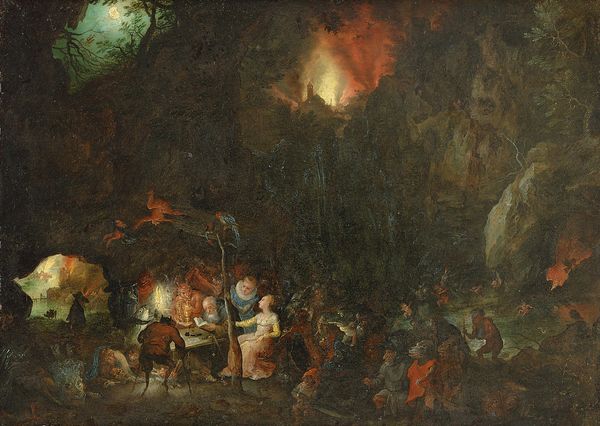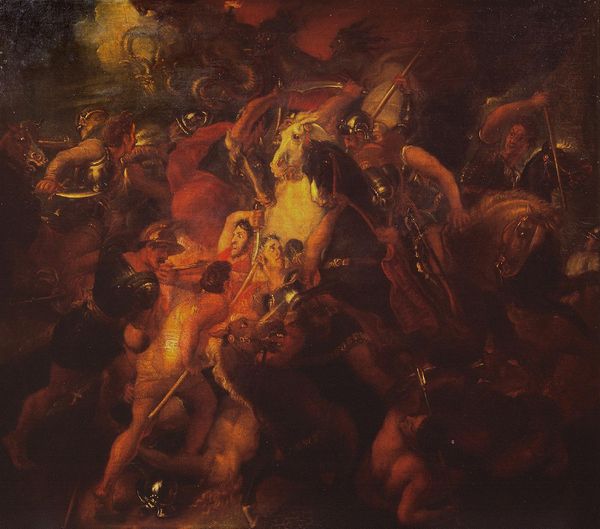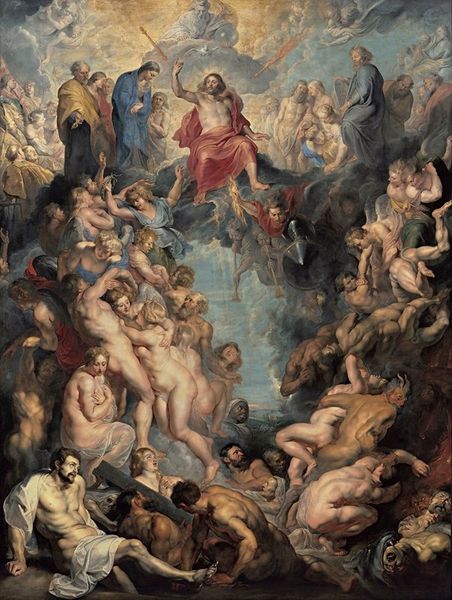
oil-paint
#
narrative-art
#
baroque
#
oil-paint
#
landscape
#
oil painting
#
mythology
#
history-painting
Copyright: Public domain
Curator: Standing before us is "The Fire of Troy," a dramatic oil painting created around 1601 by Adam Elsheimer. What’s grabbing you initially about this scene? Editor: Immediate impression? Utter chaos rendered in almost unbelievable light. That blaze feels almost tactile; you can practically feel the heat radiating from the canvas. There’s a sense of desperate urgency permeating the whole scene. Curator: Precisely. Elsheimer's known for packing enormous narrative heft into relatively small paintings. This piece is brimming with details: the figures fleeing, the architecture crumbling, and, of course, that incredible conflagration dominating the background. Editor: The composition’s fascinating; almost divided in two. The left foreground seems dominated by the panicked citizens of Troy, while the right draws our eye towards the cause of all this mayhem—that distant but searing fire. Note how his distribution of light emphasizes the contrast. Curator: That's where Elsheimer’s mastery really shines. The chiaroscuro—the interplay of light and dark—is extraordinary, wouldn’t you say? He uses the light not just to illuminate, but to direct our emotional response, mirroring the terror and desperation of the Trojan citizens. Editor: Absolutely. Semiotically, light traditionally means divinity, knowledge, clarity—here, though, its meaning is perverted. The fire becomes the signifier of destruction, injustice, maybe even fate itself. Do you think the artist sympathizes with Trojans? Curator: Given the time period, I suspect Elsheimer saw the Trojan War more as a historical event worthy of dramatization. Still, his rendering grants dignity to the defeated; look at the detail given to human faces despite being enmeshed into larger action. Each fleeing person is more than simply an archetype, yet not enough to tell an in-depth history. Editor: Which circles back to my point earlier, about chaos. In the purest formal sense, Elsheimer utilizes that compositional turbulence and skewed proportion to visually signify societal breakdown. Even those trying to carry someone to safety are but specs within this painting's overall destruction. Curator: In the end, regardless of its place within Baroque art history or Classical mythology, "The Fire of Troy" still delivers that primal jolt: the horror of losing everything. Editor: Leaving you with an unexpectedly sobering dose of reality alongside this breathtaking painting. Nicely done.
Comments
No comments
Be the first to comment and join the conversation on the ultimate creative platform.
